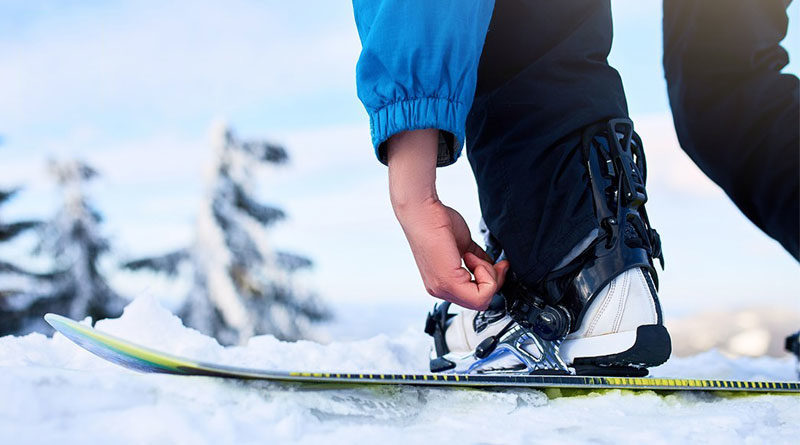How Should Snowboard Boots Fit in Bindings?
Snowboard bindings are a crucial piece of equipment. They are the connecting point between your boots and your snowboard. They ensure effective power transfer and if your bindings do not fit you right, you will feel uncomfortable.
Such bindings will also affect your performance. You won’t be able to transfer power to your board effectively. As a result, you won’t have much control over your board. In some cases, that can lead to a crash. Therefore, the fit of your bindings has to be adequate.
How to Ensure a Right Fit?
The first step for your bindings to fit right is to choose the right size of bindings for you. The general sizes of snowboard bindings are Small S/M, Medium M/L, and Large L/XL. Choosing the right size is essential. Check the manufacturer’s binding size chart in the product descriptions to make the right choice.
After you have chosen the right size, check the fit of the binding by placing your boot in it. Your boot should sit in the binding perfectly. It shouldn’t hang out nor should it have room to move sideways or back and forth.
Now strap your boots in and your boots should fit snugly. The straps of your boots shouldn’t create any pressure points on your boots that would make you uncomfortable. You can adjust the strap from both sides to bring it to the center of your boot.
The heel of your boot should sit snugly in the heel cup allowing the boot to flex but not sway. Once your boot is secured in the bindings, there shouldn’t be any extra play. If you have comfortable boots with properly fitting bindings, then you are good to go.
Snowboard bindings for women are different from bindings for men. The dimensions of women’s bindings are different. Their highbacks are also more suited for women’s calves and boots.
The fit of the bindings also depends on the type of bindings and the strap type of your bindings. The more options for the adjustment you have, the better fit you will get.
Types of Snowboard Bindings
There are 3 different types of snowboard bindings on the market. They are as follows:
Strap-in Bindings
Strap-in bindings are the most common type of bindings on the market. They have two straps at tow and ankle, a chassis, and a highback. The high-end bindings are highly customizable. You can adjust many things like straps, heel cup, forward lean, and canting of the footbed. They can be tweaked to your liking to give the fit you want.
Speed-Entry or Rear-Entry Bindings
Speed or rear-entry bindings were a great innovation in their time that changed the binding industry. These bindings have a hinged highback that can be lowered allowing you to put the boot in. Once you tweak the bindings to suit you, it takes seconds to just put your boots in, pull the highback up, and lock the switch. Tricky to use at first, but they save a lot of time.
Step-on Bindings
Step-on bindings were introduced in 2017 by Burton. They are like ski bindings where you just click your boots and off you go, a true game-changer. There are no straps, no adjustments, nothing. All you have to do is choose the right size, click your boots in and that’s it.
If you want to be free of fitting issues, then you should get these bindings. Since there are no straps, these bindings can be used for longer periods without discomfort. But Step-on bindings only work with Step-on boots.
Strap Types
The type of strap on your bindings also affects how your bindings fit. There are different strap types on the market. As mentioned earlier, Step-on bindings don’t have straps so there are no fitting issues.
Traditional Toe Straps
Traditional toe straps are basic. They have two straps, one over the toes and one over the ankle. The straps hold your boot on the footbed. They are becoming less popular.
Cap Strap
With only a slight change of angle, cap straps become more secure than traditional toe straps. The front strap forms a cap on the toe box instead of simply going over the toes. The changed angle pushes the boot against the heel cup.
1-Piece Strap
1-piece strap is a single massive strap that covers the whole boot. They are more secure and comfortable because of better pressure distribution throughout the boot. 1-piece straps are often featured on rear-entry bindings.




